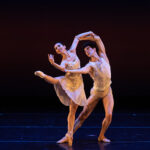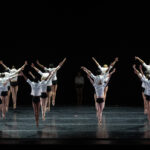Swan Lake: A History
Swan Lake, one of the most beloved ballets of all time, captivates audiences with its hauntingly beautiful music and mesmerizing choreography. This timeless tale of love, betrayal, and transformation has a rich history that intertwines with the evolution of ballet itself. Join us as we explore the origins of Swan Lake, its music, and its lasting impact on the world of dance.
The Story
At its core, Swan Lake tells the story of Prince Siegfried, who falls in love with Odette, a princess transformed into a swan by an evil sorcerer, Von Rothbart. The ballet explores themes of love, loyalty, and the struggle between good and evil. The duality of Odette and Odile, the Black Swan, creates a powerful dramatic tension, embodying both innocence and seduction.
The narrative unfolds through a series of enchanting scenes, from the serene beauty of the lakeside to the grand ballroom where the sorcerer’s treachery culminates. The emotional depth of the story, paired with Tchaikovsky’s evocative score, draws the audience into its world, making it a staple of ballet repertoire.
The Origins of Swan Lake
Swan Lake was conceived in the late 19th century, with its first performance taking place at the Bolshoi Theatre in Moscow in 1877. The ballet was composed by Pyotr Ilyich Tchaikovsky, who had already established himself as a formidable composer.
Julius Reisinger, a lesser-known figure in ballet history, choreographed the original production. Reisinger was tasked with bringing Tchaikovsky’s score to life, but his choreography failed to resonate with audiences or critics. The ballet’s narrative and thematic potential were not fully realized in this initial version, which was criticized for its uneven pacing and lack of dramatic depth.
Reisinger’s choreography was heavily influenced by the traditional ballet style of the time, which often prioritized technical virtuosity over emotional storytelling. As a result, the ballet did not make a significant impact in its early performances, and Tchaikovsky himself expressed dissatisfaction with how his music was interpreted.
In 1895, renowned choreographer Marius Petipa, along with his assistant Lev Ivanov, took the opportunity to reimagine Swan Lake. Petipa focused on the narrative and character development, while Ivanov infused the ballet with emotional depth and innovative choreography. Their collaboration effectively harnessed Tchaikovsky’s rich score, creating a cohesive and captivating performance that captured the hearts of audiences.
This revival not only solidified Swan Lake’s place in the ballet canon but also marked a turning point in the history of ballet itself. Petipa and Ivanov’s version set a new standard for narrative ballets, emphasizing the importance of storytelling and emotional connection through dance. Today, it is this interpretation that continues to define Swan Lake, overshadowing Reisinger’s original work and establishing the ballet as a timeless masterpiece.
The Music of Swan Lake
Tchaikovsky’s score for Swan Lake is one of the most celebrated and iconic in classical music, distinguished by its emotional depth, intricate orchestration, and melodic richness. Composed between 1875 and 1876, the music weaves together the ballet’s narrative, characters, and themes, enhancing the storytelling through a variety of motifs and musical forms.
Structure and Composition
Swan Lake is structured into four acts, each marked by its own distinct musical themes that correspond to the unfolding drama. Tchaikovsky’s ability to craft melodies that evoke specific emotions plays a crucial role in the ballet’s narrative.
- Act I introduces the audience to Prince Siegfried and his world. The opening scene is characterized by serene and romantic melodies that capture the beauty of the lakeside setting. The music reflects the prince’s innocence and the sense of longing that permeates the story.
- Act II introduces the Swan Theme—a haunting melody played by the strings—captures Odette’s plight as a swan. This theme becomes a musical symbol of her character, conveying both her beauty and sadness.
- Act III transitions to the grandeur of the royal ballroom, where the atmosphere shifts dramatically. The music here is lively and celebratory, featuring waltzes that contrast sharply with the somber themes of the earlier acts. The Pas de Deux between Siegfried and Odile, the Black Swan, is particularly notable for its intense and seductive melodies, highlighting the duality of love and deception.
- Act IV concludes the ballet on a tragic note, returning to the haunting motifs associated with Odette and Siegfried. The music is imbued with a sense of despair and inevitability, culminating in an emotional finale that leaves a lasting impact on the audience.
Influence and Legacy
Though Swan Lake initially struggled to find its footing, it has since become a cornerstone of ballet companies around the world. Its music has transcended the stage, inspiring countless adaptations in film, theater, and even contemporary dance.
The ballet has been interpreted by numerous choreographers, each bringing their own vision to the story. Notable productions include those by George Balanchine, Matthew Bourne, each adding layers of complexity and innovation to the original tale.
Swan Lake is more than just a ballet; it is a cultural phenomenon that intertwines music, dance, and storytelling. Its haunting score and timeless narrative have made it an enduring masterpiece that continues to inspire and move audiences. As we celebrate the history of Swan Lake, we also honor the artistry of those who have brought this enchanting tale to life on stage for generations. Whether you’re a lifelong fan or a newcomer to the ballet world, the magic of Swan Lake is sure to leave a lasting impression.
Written by the Community Engagement Department.







